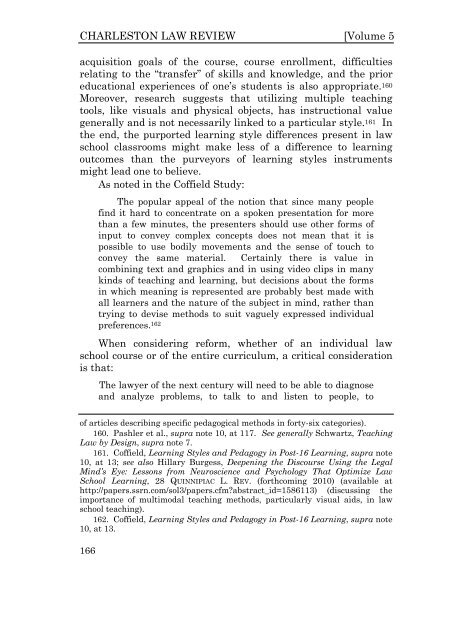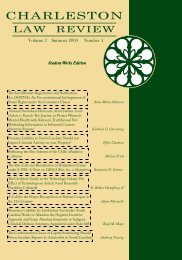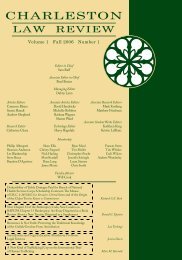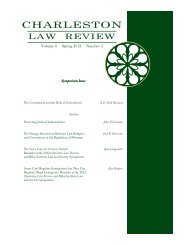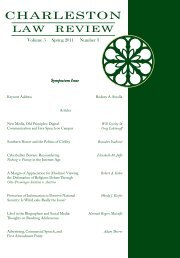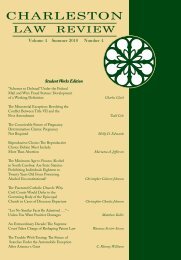Volume 5 Winter 2011 Number 2 - Charleston Law Review
Volume 5 Winter 2011 Number 2 - Charleston Law Review
Volume 5 Winter 2011 Number 2 - Charleston Law Review
Create successful ePaper yourself
Turn your PDF publications into a flip-book with our unique Google optimized e-Paper software.
CHARLESTON LAW REVIEW [<strong>Volume</strong> 5acquisition goals of the course, course enrollment, difficultiesrelating to the “transfer” of skills and knowledge, and the prioreducational experiences of one’s students is also appropriate. 160Moreover, research suggests that utilizing multiple teachingtools, like visuals and physical objects, has instructional valuegenerally and is not necessarily linked to a particular style. 161 Inthe end, the purported learning style differences present in lawschool classrooms might make less of a difference to learningoutcomes than the purveyors of learning styles instrumentsmight lead one to believe.As noted in the Coffield Study:The popular appeal of the notion that since many peoplefind it hard to concentrate on a spoken presentation for morethan a few minutes, the presenters should use other forms ofinput to convey complex concepts does not mean that it ispossible to use bodily movements and the sense of touch toconvey the same material. Certainly there is value incombining text and graphics and in using video clips in manykinds of teaching and learning, but decisions about the formsin which meaning is represented are probably best made withall learners and the nature of the subject in mind, rather thantrying to devise methods to suit vaguely expressed individualpreferences. 162When considering reform, whether of an individual lawschool course or of the entire curriculum, a critical considerationis that:The lawyer of the next century will need to be able to diagnoseand analyze problems, to talk to and listen to people, toof articles describing specific pedagogical methods in forty-six categories).160. Pashler et al., supra note 10, at 117. See generally Schwartz, Teaching<strong>Law</strong> by Design, supra note 7.161. Coffield, Learning Styles and Pedagogy in Post-16 Learning, supra note10, at 13; see also Hillary Burgess, Deepening the Discourse Using the LegalMind’s Eye: Lessons from Neuroscience and Psychology That Optimize <strong>Law</strong>School Learning, 28 QUINNIPIAC L. REV. (forthcoming 2010) (available athttp://papers.ssrn.com/sol3/papers.cfm?abstract_id=1586113) (discussing theimportance of multimodal teaching methods, particularly visual aids, in lawschool teaching).162. Coffield, Learning Styles and Pedagogy in Post-16 Learning, supra note10, at 13.166


